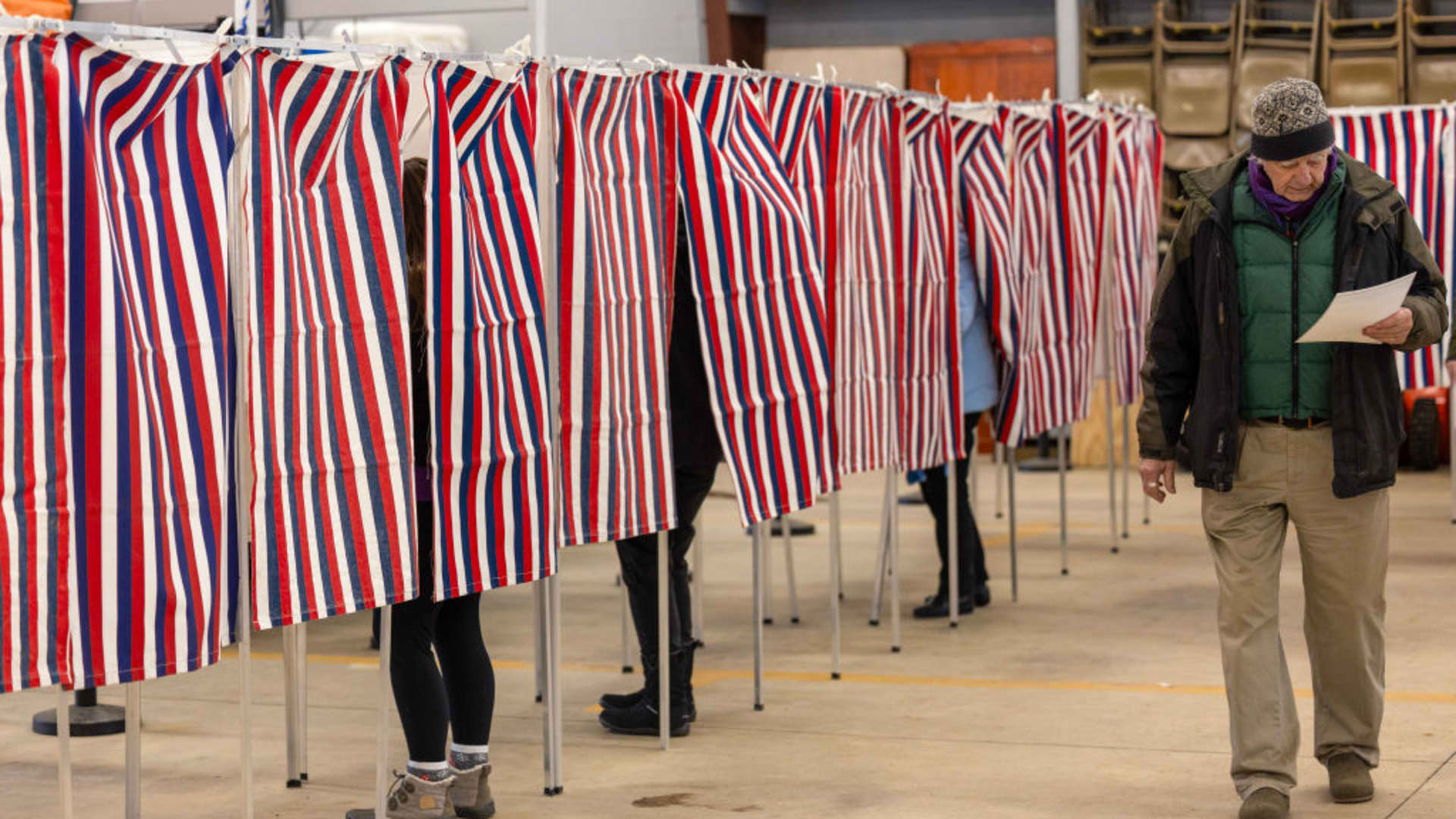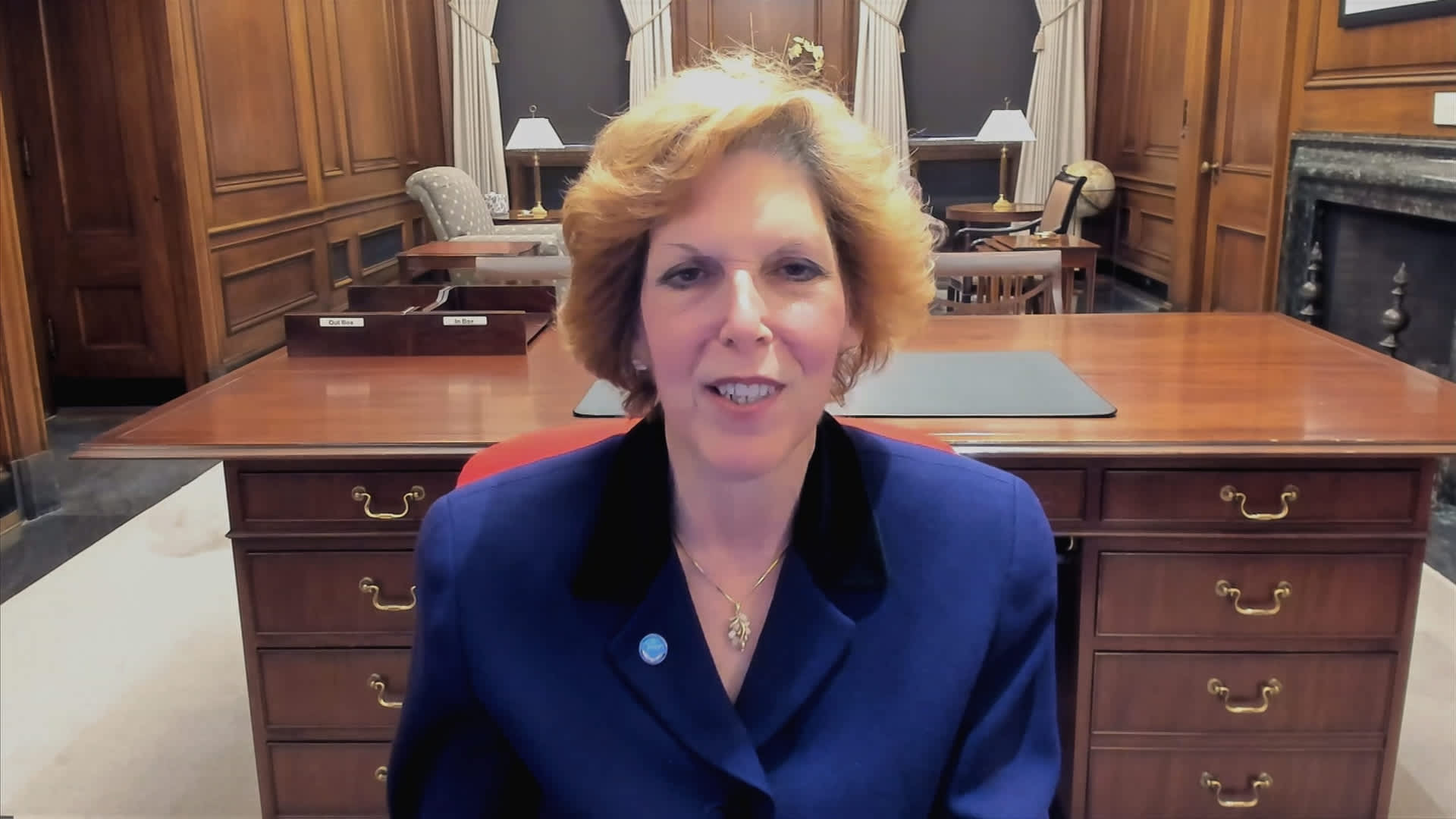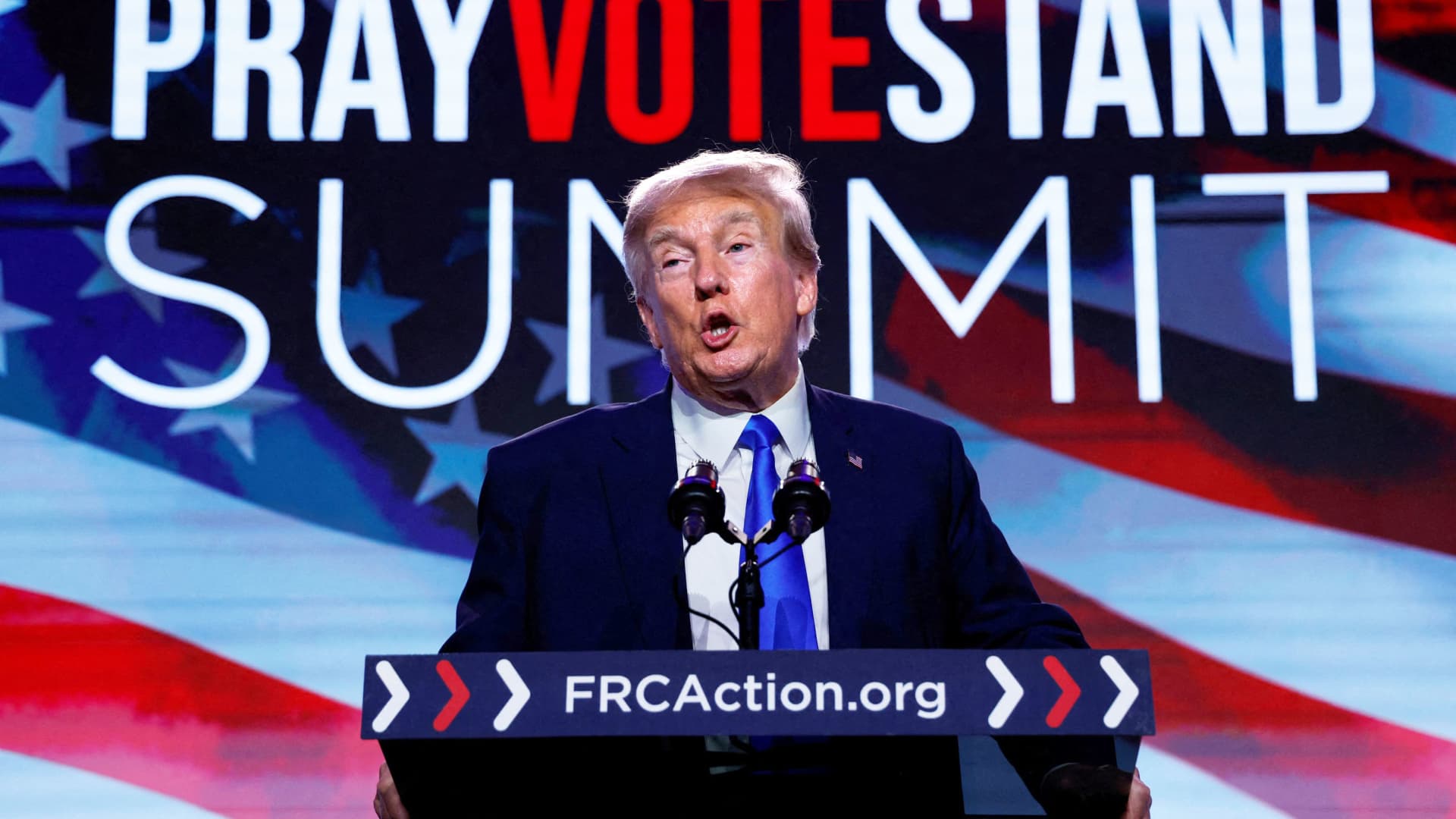Voters fill out their ballots on January 23, 2024 in Loudon, New Hampshire. With Florida Gov. Ron DeSantis dropping out of the race two days earlier, Republican presidential candidates former President Donald Trump and former U.N. Ambassador Nikki Haley are battling it out in this first-in-the-nation primary.
Tasos Katopodis | Getty Images
2014 was the first year Lonna Atkeson remembers receiving hate mail.
Atkeson, a political scientist who studies election polls and public opinion, has been conducting voter surveys since 2004. She is currently a professor at Florida State University and has authored several books.
But a decade into her election work, she said, the angry messages began to arrive.
“I got letters from people saying, ‘You’re part of the problem. They are not part of the solution. I will no longer answer your surveys. You are an evil academic trying to brainwash our children. ‘” Atkeson recalled in an interview with CNBC.
For Atkeson, these notes marked a shift: A more polarized electorate had begun to lose trust in institutions like polls, and voters might no longer be as willing to talk to them.
At the same time, technology was advancing and landlines or postal lines were no longer foolproof ways to connect with survey respondents.
“People weren’t answering their phones,” Rachael Cobb, a political science professor at Suffolk University, told CNBC. “Even in the last 10 years, you may have tried 20 callers to get what you need. Now it’s double that: 40 callers to get what you need. So each survey takes longer and is more expensive.”
Polarization and technology are among the obstacles that pollsters say make it difficult to conduct accurate voter surveys.
As a result, pollsters have made some serious mistakes in recent election cycles.
“If you look at some of the big mistakes, they’re pretty big,” Atkeson said.
Query blind spots
Among the major failures that have plagued the polling industry is the 2016 presidential election, when various headlines littered the news claiming that Democratic nominee Hillary Clinton’s chances of winning against Republican nominee Donald Trump were around 90%.
An industry-wide autopsy identified several key causes for the 2016 election flop.
Certain factors were beyond the pollsters’ control.
For example, according to the American Association for Public Opinion Research, some voters decided who they wanted to put on their ballot at the last minute, making it difficult to be accountable.
And some voters were hesitant to support Trump because of his controversial rhetoric during the 2016 campaign. As a result, they did not always tell pollsters their voting intentions.
But other factors were also direct results of methodological monitoring.
“People haven’t taken representation in education into account,” said Matin Mirramezani, chief operating officer at Generation Lab, a polling organization that specifically targets young voters. “Education is a lesson from 2016.”
White voters without a college degree, who made up a large portion of Trump’s base, were undercounted in 2016 polls, in part because people with higher education are “significantly more likely” to participate in polls than those with less education AAPOR.
Despite recognizing these problems, polling in the 2020 election produced the highest margins of error in 40 years, again underestimating Trump support, AAPOR found.
And during the 2022 midterms, the “red wave” of voters that the media was convinced would overwhelmingly put Republicans back in control of Congress never materialized. The Democrats retained their majority in the Senate and narrowly retained control of the House of Representatives.
Course correction 2024
Ahead of the 2024 rematch between Trump and President Joe Biden, pollsters are trying various strategies to avoid repeating history and accurately capture the elusive Trump vote.
For one thing, pollsters have adjusted their approach to “weighting,” a method that assigns each respondent a multiplier to change how much their answer influences the overall poll result.
Pollsters have always used weights to create survey samples that accurately reflect the electorate in terms of gender, age, race or income. But after 2016, they pay special attention to weight education.
Atkeson suggested that pollsters for 2024 go beyond weighting education and consider variables such as how someone voted in 2020, or even whether they rent or own a home or whether they are a blood donor.
“You just start tagging everything you can,” Atkeson said. “Something that can tell us, ‘What does the population really look like?'”
In addition to weighting, pollsters also pay more attention to survey participants who they previously discounted.
“Some people start a poll, tell you who they’re going to vote for, and then say, ‘I’m done. I don’t want to talk to you anymore. Goodbye,’” Don Levy said. The director of the Siena College Research Institute, which helps conduct polls for The New York Times, told CNBC. “In 2020 and 2022 we didn’t count these people.”
But this time, Levy says, they’re counting the “drop-offs.”
They found that if they had counted these impatient respondents in 2020 and 2022, their poll results would have shifted “about a point and a half toward Trump,” Levy said, eliminating about 40% of their error.
Levy added that SCRI is also taking an additional step to target Trump voters by modeling its sample to include a higher polling rate for people considered to be “highly likely Trump voters in rural areas.”
“If you think of them as M&Ms, let’s assume the Trump M&M vote is red,” Levy said. “We still have a few red M&Ms in the jar.”
Source link
2024-05-04 12:00:01
www.cnbc.com














